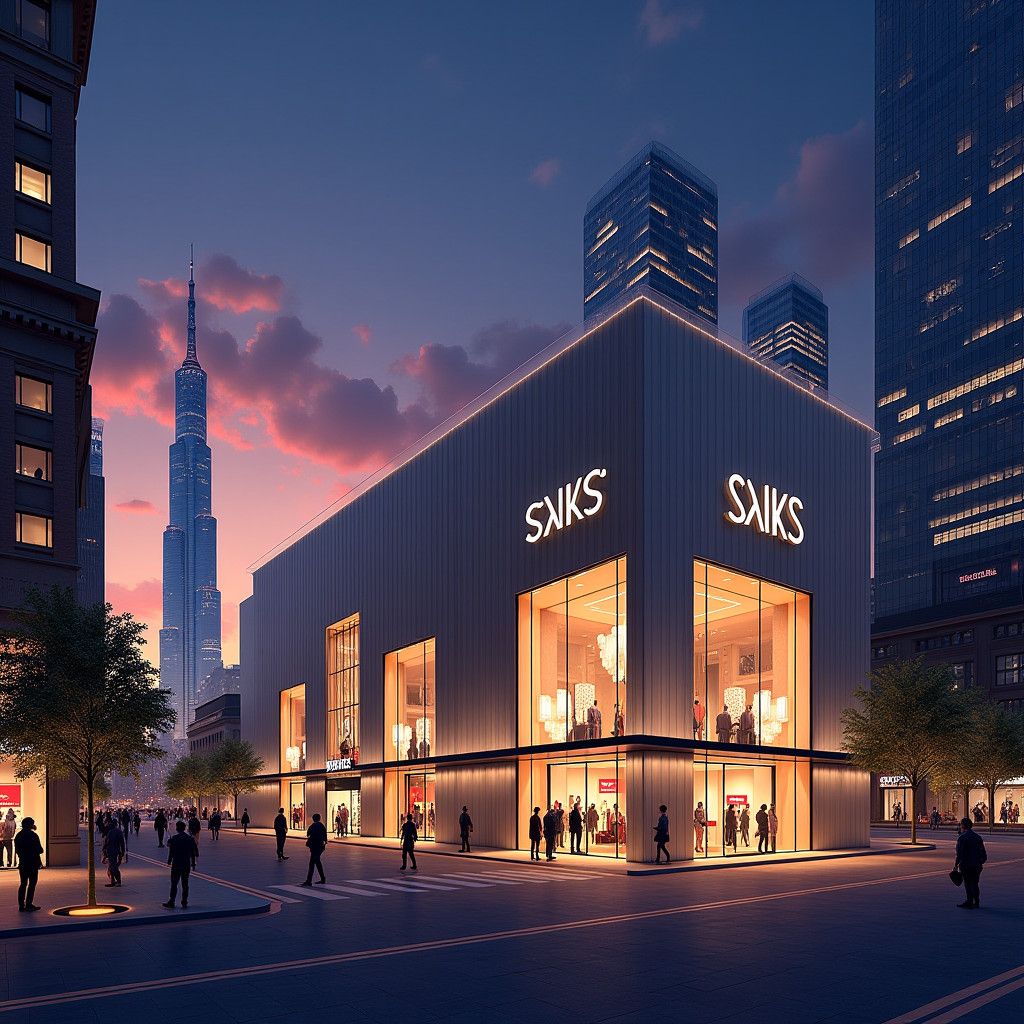In a significant move that is set to reshape the landscape of luxury retail, Saks Global has completed its $2.7 billion acquisition of Neiman Marcus Group. This merger, first announced in July, unites several iconic brands including Saks Fifth Avenue, Saks Off 5th, Neiman Marcus, and Bergdorf Goodman under one strategic corporate umbrella. The integration of these retailers aims to harness the power of data and innovation to enhance customer experience in an increasingly competitive market.
Despite the merger, Saks Global has stated that each brand will continue to operate independently, preserving their unique identities while benefiting from shared resources and expertise. This strategic decision is key to maintaining brand loyalty and customer trust, factors critical in the luxury segment. As Richard Baker, executive chairman of Saks Global, noted, “By uniting Neiman Marcus, Bergdorf Goodman, and Saks Fifth Avenue, we have created an unparalleled multi-brand luxury portfolio with tremendous growth potential.”
Funding the Merger: The Role of Amazon and Salesforce
The acquisition was partially funded through equity contributions from major investors, including tech giants Amazon and Salesforce. Amazon’s involvement is particularly noteworthy as it signals a commitment to driving innovation in the luxury shopping experience. As the e-commerce leader, Amazon will potentially leverage its vast customer insights to influence the merchandising strategies of Saks Global’s brands, aligning product offerings with consumer preferences more effectively.
Salesforce’s contribution focuses on utilizing AI and first-party data to curate a highly personalized shopping experience. With the rise of e-commerce, providing a tailored experience has become essential in converting browsers into buyers. By integrating advanced technology, Saks Global is positioned to refine its marketing strategies, ensuring that each customer interaction is relevant and engaging.
A Strategic Multi-Brand Approach
The merger not only enhances the luxury portfolio but also consolidates a robust real estate asset base. Saks Global now controls a combined real estate portfolio valued at $7 billion, incorporating both HBC’s U.S. assets and those of Neiman Marcus Group. This strategic control over prime locations offers an advantage in the upscale market, where location can significantly impact consumer behavior and brand perception.
Saks Global’s operational structure also reflects a measured approach to merging talent. Marc Metrick, the former CEO of Saks, now leads the Saks Global Operating Group, bringing with him a wealth of experience in retail management. Under his leadership, Saks Global aims to blend technology and merchandising prowess to drive growth.
The Importance of Data and Personalization
In today’s digital world, data plays a crucial role in retail success. The collaboration with Salesforce is expected to advance Saks Global’s technology strategy significantly. With AI-driven insights, Saks Global can enhance not only its marketing efforts but also improve inventory management and customer service. Personalization is no longer just a competitive edge; it is an expectation among today’s luxury consumers. Having tools to analyze customer behaviors and preferences will allow Saks Global to create bespoke shopping experiences that cater to individual needs.
Remaining Brands and New Leadership Roles
The merger also sees key roles designated to ensure that each brand retains its identity while benefiting from the overall group’s resources. Bergdorf Goodman will continue as a standalone entity led by Tracy Margolies, who brings extensive merchandising experience. Additionally, Emily Essner is appointed as president and chief commercial officer, indicating a focus on aligning commercial operations to elevate the overall customer experience.
Saks Global has also appointed Bill Bine as its chief transformation officer, which hints at a commitment to evolving in response to market dynamics. This strategic emphasis on leadership positions underscores the importance of not just operational growth but also thoughtful organizational development—a crucial factor in navigating post-merger integration challenges.
Conclusion: Implications for the Luxury Retail Market
The $2.7 billion acquisition of Neiman Marcus Group by Saks Global marks a pivotal moment in luxury retail. By combining forces and leveraging advanced technology, the merged entities are poised to enhance consumer experiences, adapt to market changes, and drive growth. As luxury shoppers seek more personalized and engaging shopping journeys, the expertise that Saks Global brings to the table may well set a new standard for the industry.
With a strong focus on technology, data-driven insights, and brand integrity, Saks Global is prepared to redefine the luxury retail landscape. As the market evolves, adaptability and innovation will be essential for remaining competitive. The future of luxury shopping may very well be shaped by the bold strategies put forth by Saks Global.
